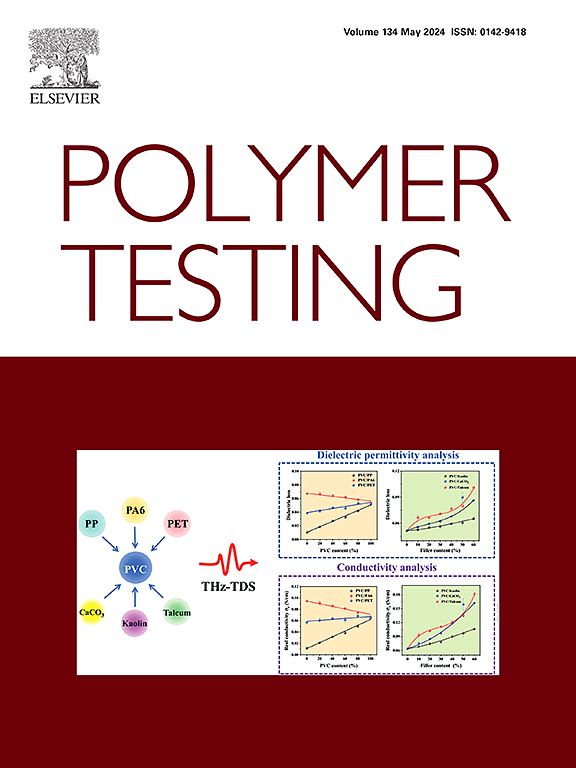Jet forming of Al/PTFE-W/Cu double-layer liner considering reactivity and damage to medium-thick concrete target
IF 5
2区 材料科学
Q1 MATERIALS SCIENCE, CHARACTERIZATION & TESTING
引用次数: 0
Abstract
Because the metal jet with high specific kinetic energy and high-density cannot release energy and damage inside the target, the later fluoropolymer-based reactive material jet can release energy and deflagration in the penetrating hole, but its mechanical properties are not as good as that of the high-density insensitive metal liner, hence it does not have strong penetration ability. Therefore, in order to seek the liner structure with the respective advantages of metal and reactive material, it has become a new direction to improve the damage ability of warhead. In this paper, the jet forming of Al/PTFE-W/Cu double-layer liner and the damage characteristics of concrete medium-thick target are studied by numerical simulation, combined with ignition growth model and Arrhenius reaction model. The results show that Al/PTFE reactive material adheres to the slug of W/Cu jet and advances together, which effectively combines the characteristics of strong penetration of metal jet and after effect deflagration of reactive material. The penetration of metal jets and the deflagration of reactive materials lead to concrete center cracking and crack propagation. Part of the reactive material and 6 cm concrete particles on the surface of the target will be thrown out of the target with the airflow of the reaction product, and concrete particles with diameters of 9–12 cm will be compacted to both sides of the hole. The reaction of the reactive material increases under the detonation of the explosive, and it collides with the surrounding concrete when entering the intrusion hole. The secondary reaction promotes the increase of the reaction degree, which leads to the cracking and crack propagation of the concrete target center. Some reactive materials are used for opening and releasing energy near the opening. Only a small amount of active materials reach the bottom of the hole, which is difficult to effectively damage the deep structure of the concrete. Therefore, effectively adjusting the reaction threshold of the reactive material plays a vital role in the damage performance of the Al/PTFE-W/Cu jet, which will also lay a foundation for the damage characteristics of the strong penetration-energy release initiation of the energetic double-layer liner.
考虑反应性和对中厚混凝土靶损伤的Al/PTFE-W/Cu双层衬垫喷射成形
由于具有高比动能和高密度的金属射流不能在目标内部释放能量和破坏,后期的含氟聚合物基反应材料射流可以在穿透孔内释放能量和爆燃,但其力学性能不如高密度的不敏感金属衬里,因此其穿透能力不强。因此,寻求具有金属和活性材料各自优势的内衬结构,成为提高战斗部毁伤能力的新方向。本文结合点火生长模型和Arrhenius反应模型,采用数值模拟的方法研究了Al/PTFE-W/Cu双层衬垫的射流成形和混凝土中厚目标的损伤特性。结果表明:Al/PTFE反应材料粘附在W/Cu射流段塞上并共同推进,有效地结合了金属射流强穿透性和反应材料后效爆燃的特点;金属射流的侵彻和活性材料的爆燃导致混凝土中心开裂和裂纹扩展。反应产物的气流将靶材表面的部分活性物质和6cm的混凝土颗粒甩出靶材,将直径为9 - 12cm的混凝土颗粒压实到孔的两侧。活性物质在炸药爆轰作用下反应增强,进入侵入孔后与周围混凝土发生碰撞。二次反应促进了反应程度的增加,导致混凝土靶中心开裂和裂纹扩展。一些反应物质被用来打开和在打开附近释放能量。只有少量活性物质到达孔底,难以有效破坏混凝土的深层结构。因此,有效调节反应材料的反应阈值对Al/PTFE-W/Cu射流的损伤性能起着至关重要的作用,这也将为高能双层衬里强穿透-能量释放起爆的损伤特性奠定基础。
本文章由计算机程序翻译,如有差异,请以英文原文为准。
求助全文
约1分钟内获得全文
求助全文
来源期刊

Polymer Testing
工程技术-材料科学:表征与测试
CiteScore
10.70
自引率
5.90%
发文量
328
审稿时长
44 days
期刊介绍:
Polymer Testing focuses on the testing, analysis and characterization of polymer materials, including both synthetic and natural or biobased polymers. Novel testing methods and the testing of novel polymeric materials in bulk, solution and dispersion is covered. In addition, we welcome the submission of the testing of polymeric materials for a wide range of applications and industrial products as well as nanoscale characterization.
The scope includes but is not limited to the following main topics:
Novel testing methods and Chemical analysis
• mechanical, thermal, electrical, chemical, imaging, spectroscopy, scattering and rheology
Physical properties and behaviour of novel polymer systems
• nanoscale properties, morphology, transport properties
Degradation and recycling of polymeric materials when combined with novel testing or characterization methods
• degradation, biodegradation, ageing and fire retardancy
Modelling and Simulation work will be only considered when it is linked to new or previously published experimental results.
 求助内容:
求助内容: 应助结果提醒方式:
应助结果提醒方式:


